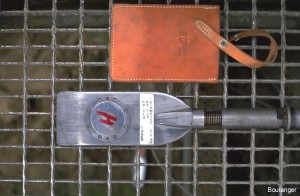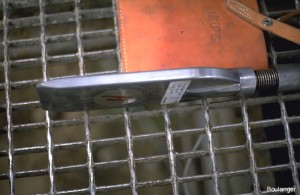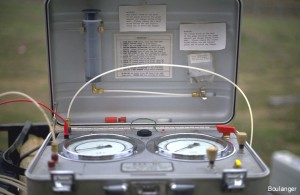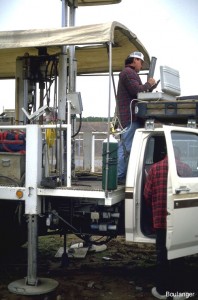The flat plate dilatometer (DMT) is an in-situ test device with specific advantages that can useful on certain projects. However, it is not yet used as frequently as the cone penetration test (CPT) in engineering practice.

This side view of a flat plate dilatometer (DMT) shows the 60-mm diameter circular membrane on the flat face (95 mm wide by 220 mm long). This membrane is expanded after the DMT has been pushed to the desired depth.

The DMT is a relatively thin blade (14 mm) that is pushed into the soil, often using the same rig that is used to push a cone penetrometer. The DMT, like the CPT, generally cannot be pushed through very dense, hard, or gravelly soils that might damage the membrane or buckle the blade.

Dual gages provide measurements of the pressure required to expand the DMT membrane. The first measurement is of the pressure required to lift the membrane off its seat (“lift off”). The second measurement is of the pressure required to expand the membrane by 1.0 mm. These pressures are used to estimate the in-situ lateral stress and lateral soil stiffness. DMT results have been correlated with other soil properties and used as the basis for some engineering design methodologies.

